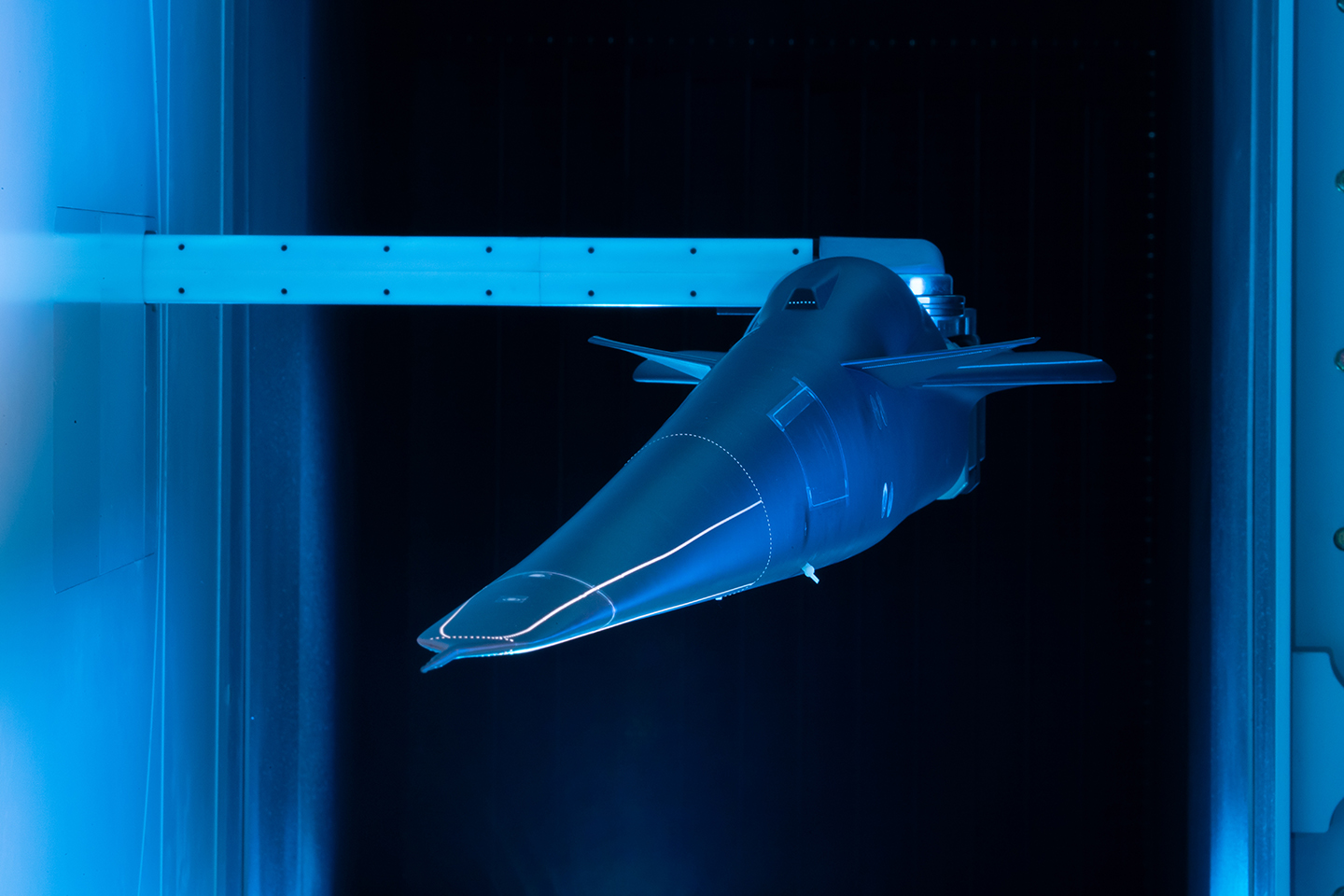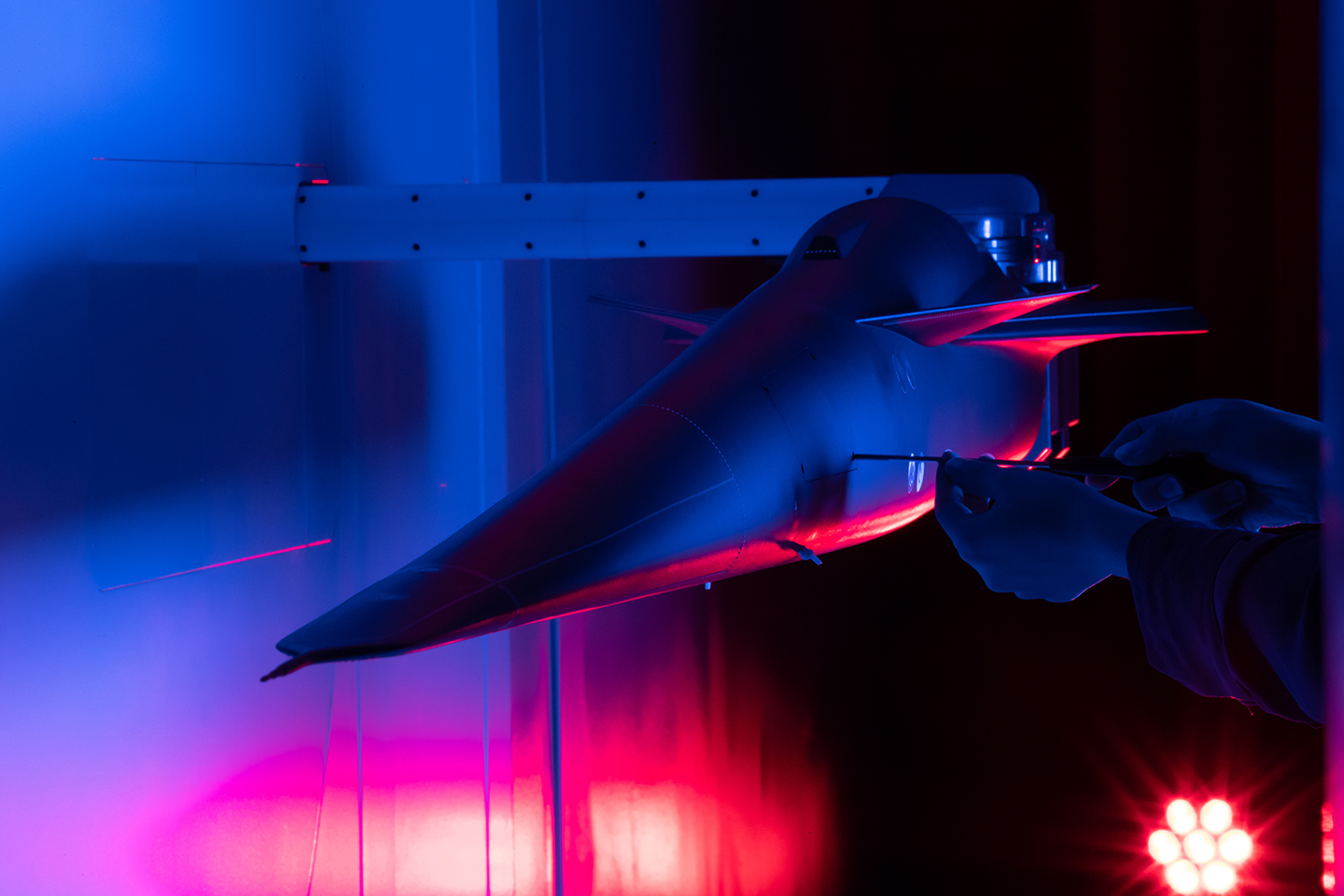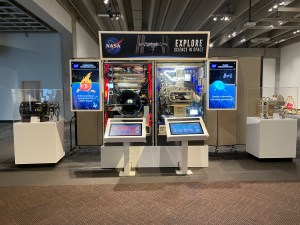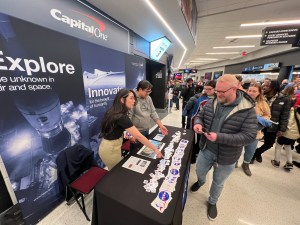Before NASA’s quiet supersonic X-59 aircraft can take to the skies, plenty of testing needs to happen to ensure a safe first flight. One part of this safety check is to analyze data collected for the X-59’s flight control system through low-speed wind tunnel tests.
The X-59 is central to NASA’s Quesst mission to expand supersonic flight and provide regulators with data to help change existing national and international aviation rules that ban commercial supersonic flight over land. The aircraft is designed to produce a gentle thump instead of a sonic boom.
Recently, Lockheed Martin’s Skunk Works facility in Palmdale, California, completed low-speed wind tunnel tests of a scale model of the X-59’s forebody. The tests provided measurements of how wind flows around the aircraft nose and confirmed computer predictions made using computational fluid dynamics (CFD) software tools. The data will be fed into the aircraft flight control system and will allow the pilot to know the altitude, speed and angle that the aircraft is flying at in the sky.
These tests help with developing the flight control system. This flight data is obtained from many instruments on the aircraft including air data probes, GPS and engine instrumentation. These wind tunnel tests allow us to verify our CFD predictions, which let us know our flight control system is safe to fly.

JEFF FLAMM
NASA’s Aerodynamics and Performance Lead on Quesst
The Lockheed Martin Skunk Works low-speed wind tunnel produces air moving at the same speed that the real, full-scale X-59 will experience during takeoff and landing. However, most wind tunnels are too small to fit the nearly 100-foot-long aircraft. Therefore, it was more practical for Lockheed-Martin to build an 11.5% scale model of the X-59’s forebody to simulate the airflow around the plane’s nose.
Engineers placed small wind vanes on the X-59 model to measure the angle of the wind at the precise location of the air data instruments on the full-scale aircraft. The testing compared the data collected from the wind tunnel with computer model predictions to see how well they matched.
“The recent low-speed wind tunnel tests were a success,” Flamm said. “The results of the tests matched NASA and Lockheed Martin’s earlier computer predictions. There were no surprises that arose.”
Quesst Mission Continues
Supersonic flight occurs when an aircraft travels faster than the speed of sound. This creates a shockwave that can make a very loud sonic boom, which can startle those on the ground. The X-59 is shaped to address that problem, generating a thump instead.
The aircraft design is important, but Quesst also has other crucial mission components. To provide regulators with data for changing aviation rules that ban commercial supersonic flight over land, NASA plans to fly the X-59 over a number of U.S. communities and survey populations on the acceptability of the sound they hear. The agency will share this information with national and international regulators.
Work on the X-59 continues, and the Quesst team plans for a first flight of the aircraft at the end of 2022.
To learn more about the Quesst mission and the continued progress of the X-59, visit www.nasa.gov/Quesst




































